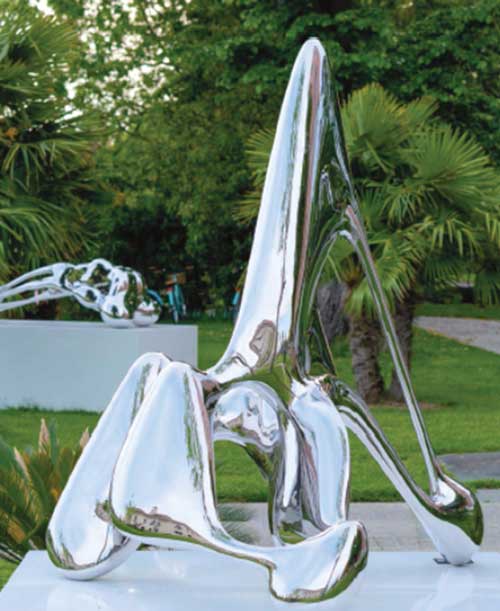Renowned Korean Artist Kim

Presents ‘Organism’ Exhibition
San Clemente Palace Kempinski Venice, a luxurious five-star hotel nestled on a private island in the heart of the eponymous city’s lagoon, hosted the highly anticipated ‘Organism’ exhibition by acclaimed South Korean artist Seung Hwan Kim.
The exhibition showcased a captivating collection of sculptures that push the boundaries of the medium, and explore the interplay between nature, light and colour.
With 38 individual and 410 group exhibitions to his name, Kim’s work has received numerous accolades including at the Seoul Contemporary Sculpture Contest, Kim Jong Un Statue and a Milan Art Fair Critics’ Award. Having studied in Pietrasanta, Italy, he had the privilege of working alongside esteemed sculptors such as César and Avoscan.
Kim’s artistic journey can be traced through his various creative phases. From his early years of experimenting with materials and textures to the exploration of the human form and its spirituality, he has now ventured into a new realm inspired by the organic beauty of nature.
In the Organism series, Kim skilfully captures the intricate changes in natural forms, using rhythmically twisting surfaces to convey their superficial complexity. Through his sculptures, he seeks to represent the order and eternal nature found in the world around us.

The Organism exhibition at San Clemente Palace Kempinski Venice pays homage to the city’s rich artistic heritage, particularly its unique use of colour and light. Kim’s works – with their soft and fluid proportions – reflect the influence of Venetian painting and art traditions, which have long celebrated the interplay of light and atmosphere.
This exhibition invites viewers to contemplate the delicate balance between materiality and immateriality, exploring the realms of the void, lightness and colour.
His early years constituted experimenting with materials and textures, trying to show the sensory integrity behind the impressions on his sculptures by emphasising the roughness of the human head and bust with grotesque forms, which are enhanced by his use of clay.
To emphasise the human spirit rather than the facial expressions or anatomical muscles of specific characters, realistic figures were hidden and expressed with metaphorical expressions and distortions.
No anatomical forms, facial expressions or contemporaries are shown in his human sculptures between 1996 and 2004 under the theme of ‘Exploring Eternity’. Rather than a small form of composition, he tried to see the human body as a mass, which was in line with attempts to escape reality – as shown in the Muse of Brancusi – and move into the mental world.
Kim’s consistent themes of ‘eternity’ and ‘organisms’ are well represented in his art. His basic ideas are central to shaping organisms because they explore what processes they repeat for eternal recovery.
His conclusion of this stage is to borrow the form of an organism and highlight its infinite trajectory as revealed by its regression line. If a particular organic form chooses a singularity of the regression line at a certain time while following an indefinitely repeated trajectory for example, special shapes such as human bodies, flowers, spines, pinwheels, starfish and holes will be created on top of it.









